Colonial Cartagena
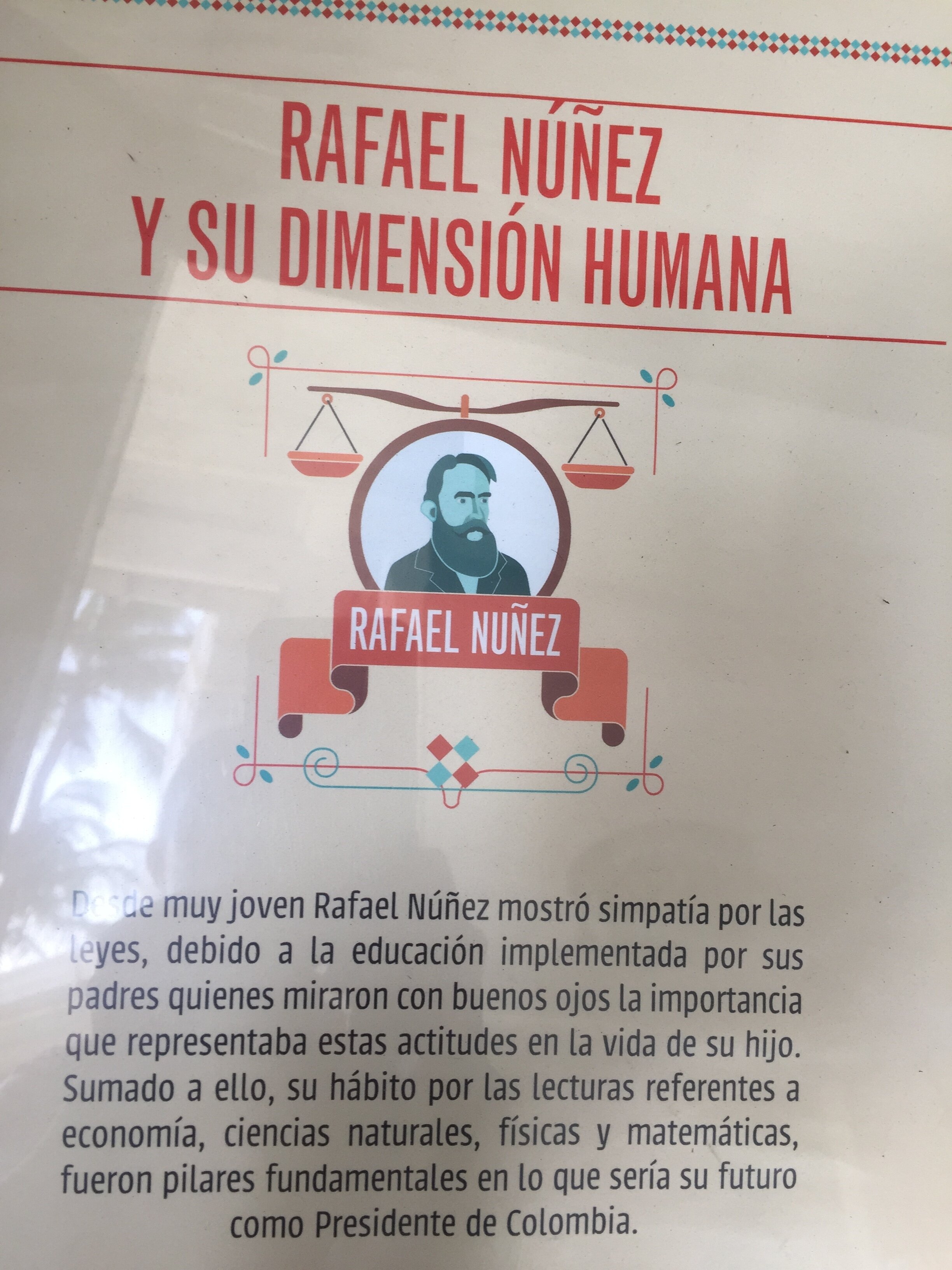

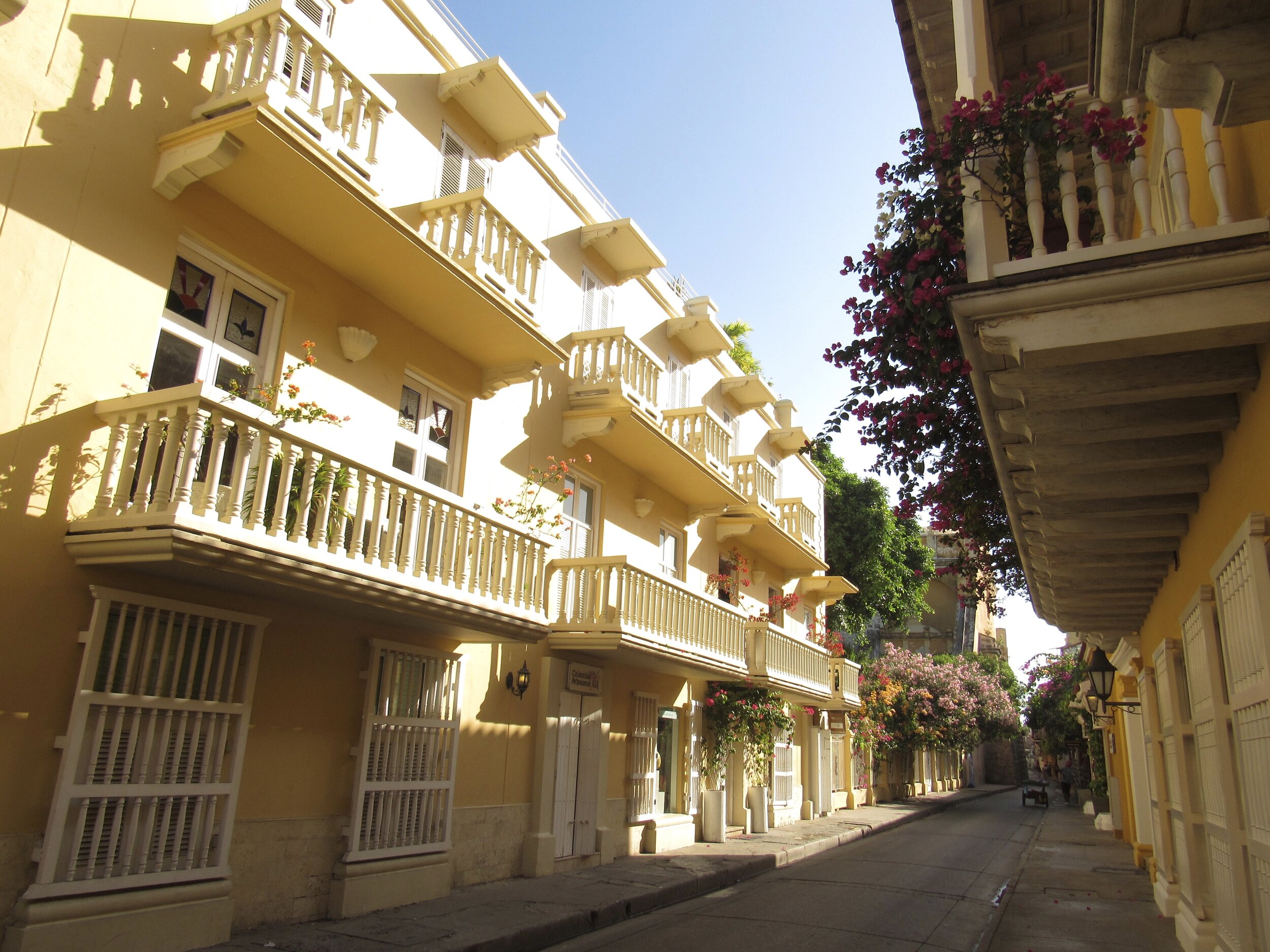

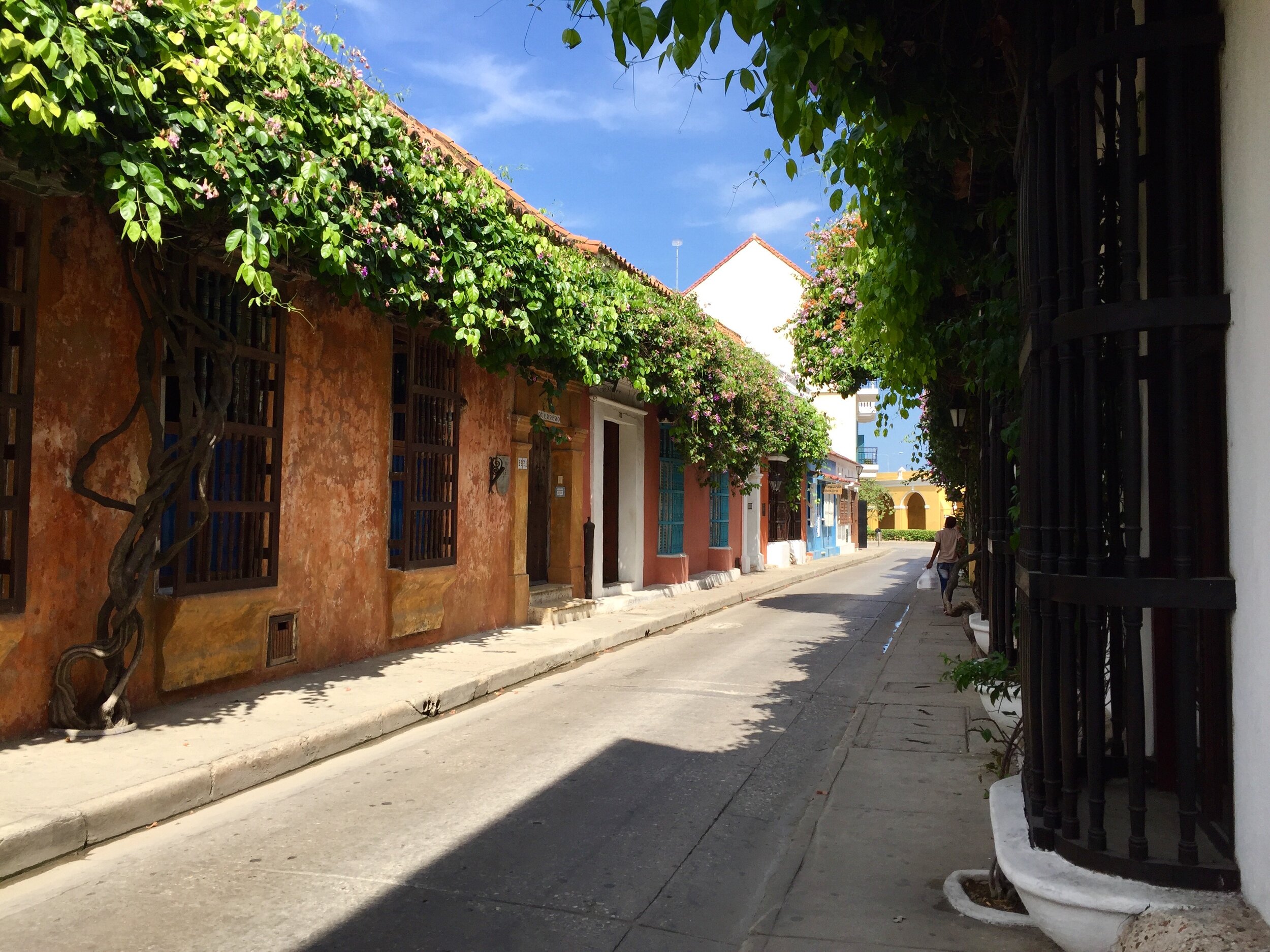
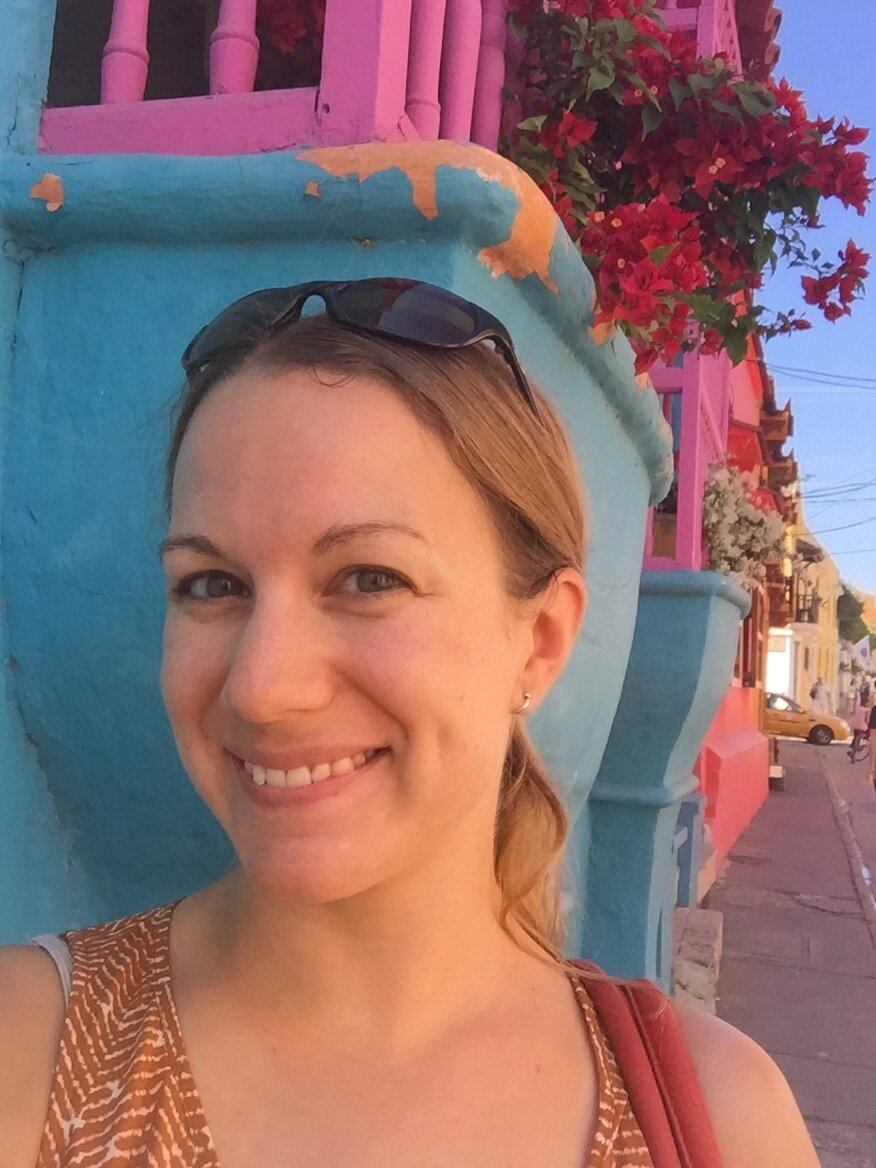
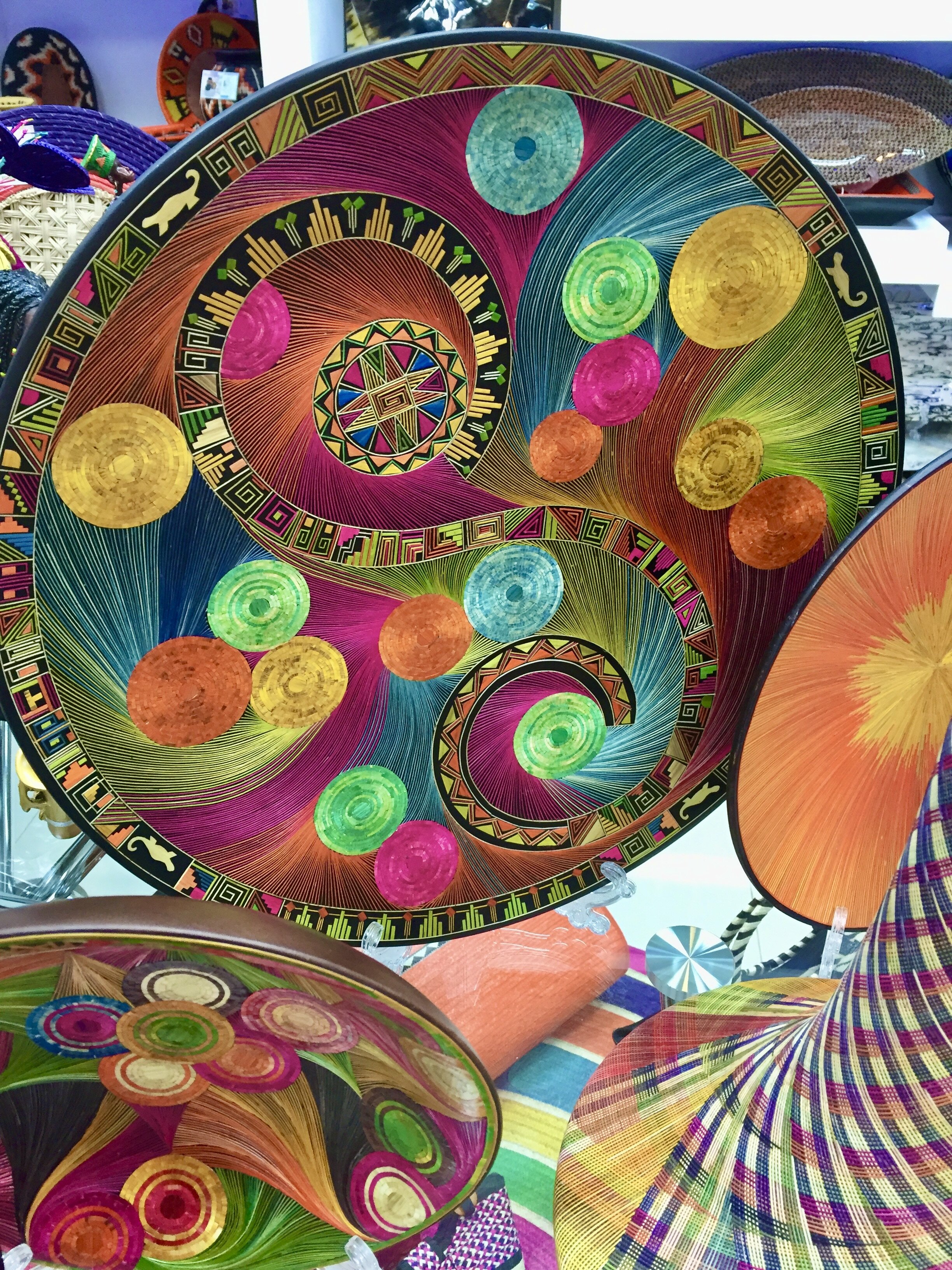
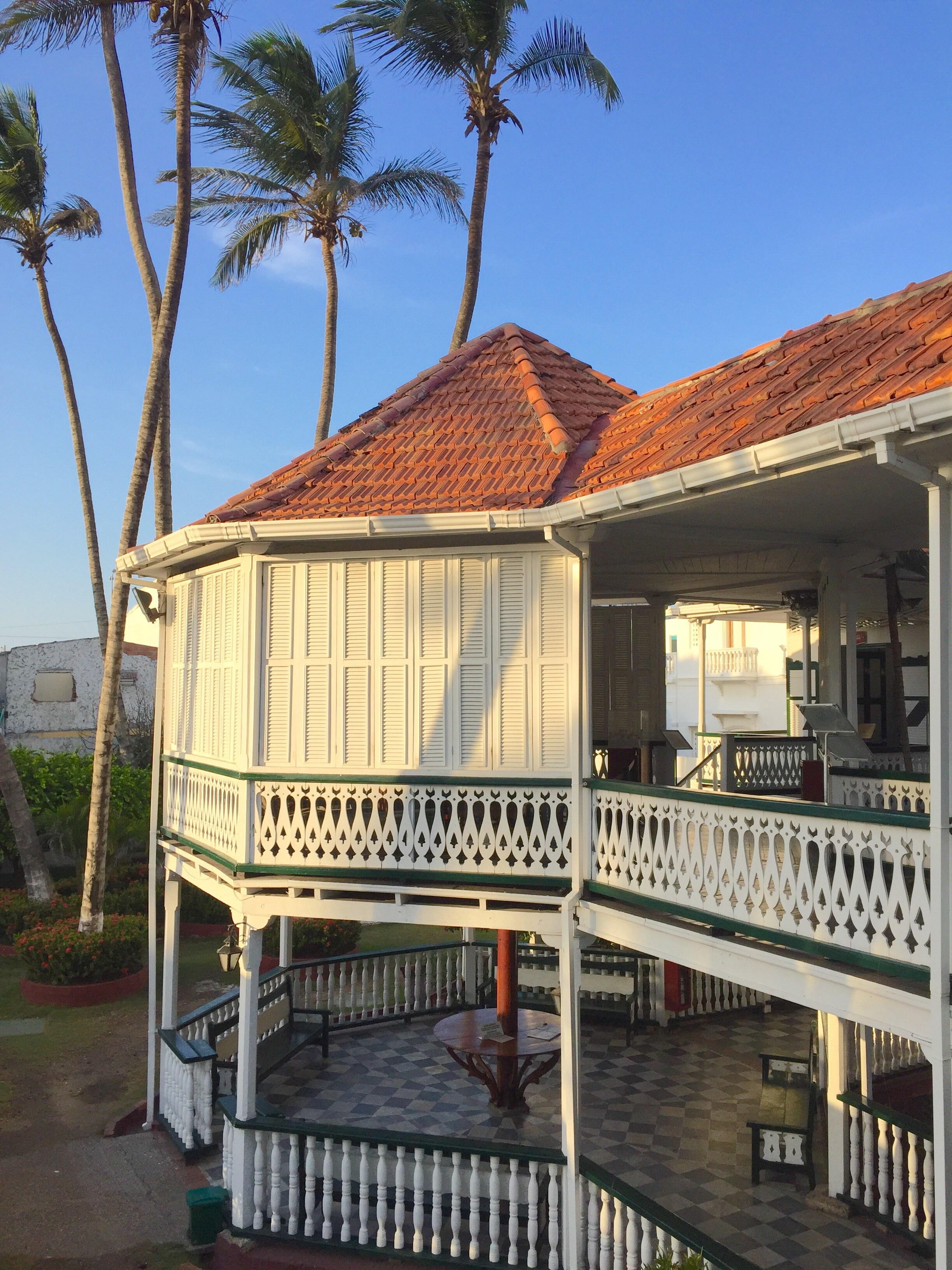
The heat, the humidity, the narrow streets, the palm trees and the beach: this is what I was looking forward to, a much needed break from the short days and rain in Seattle.
I'm staying outside the walls of the old city, which is not what I had planned, but it gives me the opportunity to walk along the beach to and from the old city. It's not far and I'm enjoying walking in the ankle-deep, warm waves. Close by is the house of Rafael Nunez, who was president of Colombia in the 1800s. It's a beautiful old house, open as a museum free to the public and has good explanations of his political life as well as the artifacts left throughout the house.
Walking through the old city is beautiful and I have happily spent hours walking through the streets, admiring the brightly colored houses, their balconies dripping with even more colorful flowers. On my fourth day here I realized a certain satisfaction that I know my way around. Streets that first were so similar in their rich colors and bougainville now have distinct charactistics that I can recognize. Despite being a very compact area, it has quite a variety of different districts. One area is mainly restaurants and fancy boutiques that accept foreign credit cards. Another has shops that seem more targeted towards locals, with bright signs advertising sales on shoes. The part of the old walled city closest the port has the museums and official buildings. This is where I found the statue of Jose Padilla and the museum of the Inquisition and the history of Cartagena.
I had been told by a friend who was here recently that the museum if the inquisition was a must. I'm happy to report that although the old guillotine and platform for hanging is on display in the back courtyard, there are none of the gruesome instruments of torture found in similar museums in Europe. Instead, there is a thoughtful reflection on what brought the inquisition to Cartagena, when the only other two in the Americas at the time were in Mexico City and Lima, Peru. A lot of it has to do with Cartagena's prominence in the salve trade. This was one of the main ports in which slave traders docked and sold their human cargo.
There was an interesting short film, shown in airconditioned room, told from the perspective of a free black woman who had been accused of witchcraft. It was artfully animated and narrated by a Colombian woman's voice. her punishment was whipping and imprisonment, which were only mildly graphic. In the same room were explanations of things that people could be accused and taken to trial for. Only Europeans and Africans were judged by the inquisition.
Each reason was accompanied by a short profile of somebody who had been found guilty of each "crime". Maria Ramirez was accused of witchcraft at the age of 41. She was sentenced to a hundred lashes and banished from the Spanish Indies. Luis Andrea, 38, was accused of devil worship and was sentenced to life in prison after serving eight years as a galley slave in Spanish ships. A spice trader from England, Adam Edon, was accused of being a Protestant. He was burned alive March 13, 1622. Blas de Manjarrez was accused of blasphemy and was sentenced to two hundred lashes and banished from Cartagena for three years. Portuguese slave trader Francisco Gomez de Leon was accused of being Jewish and sentenced to eight years as a galley slave.
Besides the fascination of the horror of life under the Spanish Inquisition, the museum shed a lot of light on the roots of the city and its history. After going through the museum I started to see some of the modern connections to the city's history. Afro culture is strong in Cartagena, present in the food, the music and the dances I saw performed in plazas and parks in the evenings. One group of 20-something men were performing dances very similar to one I saw performed at a Youssou N'Dour concert, by a Senegalese dancer. Reading about the role Cartagena played in the slave trade of the Americas, I realized that four hundred years later, the effects were still everpresent.
I didn't make it into any of the other museums because the beautiful streets and the beaches kept me outside. However, if I had another day I would have gone into the modern art museum, which looked very good. One very modern performance I saw a couple times, in different parts of the old city, was a musical trio of a digeridoo, a clarinet and a dancer. They were fantastic!
Other recommendations for Cartagena are the hostel El Viajero, www.elviajerohostel.com and the restaurant La Cocina de Cartagena in the street Calle Tumbamuertos. I didn't stay at this hostel, although I wish I had. The location is perfect. I did eat at the restaurant, among others, and it was by far my favorite. Amazing food in a very beautiful setting.
The only excursion I took outside of Cartagena was with the company Ruta Ecologica, but I wouldn't recommend it. The guide in the morning was friendly enough and took us to the smallest volcano I have every seen. We were invited to get in the mud in the crater, which looked more like a muddy geyser than a volcano to me. It looked crowd in there, so I didn't attempt to get in and don't regret it. It was on the shore of a beautiful lake and I got to walk through the trees along lake and take pictures of birds while some of the others in the group got in the mud. We had a nice lunch at a beach that was much less crowded and also has calmer waves an the ones in town. I think the coast there was much less abrupt. It seemed to stay shallow fairly far out. After lunch we were handed off to a different guide, for a canoe tour of the mangroves, who was the least enthusiastic guide I've ever seen. She spent all of the canoe ride texting in her phone and when we got to the island with the replica pre-Colombian village, she read (mumbled, in monotone) a few things off a sheet of paper as she walked us around a set of cages that housed replicas of clay artifacts from a dozen or so tribes native to that area of Colombia. It was laughable. I don't mean any disrespect to the native tribes, on the contrary, they deserve much more respect than was displayed in that replica village and by that guide. At least I got to get out of the city for a day, enjoy a different beach and spend some time in the mangroves. I hadn't noticed before but the trees' roots have barnacles on them. Maybe all mangroves have this and I just never noticed before, either way, it looked really cool and there were lots of birds in the mangroves.
My final recommendations for Cartagena are for shopping. There are a lot of jewelry store and apparently everybody who comes on a cruise gets the ship to buy emeralds. I wasn't in the market for jewelry, but I found two fantastic bookstores, my favorite being Abaco for the books, the atmosphere, the wifi and the coffee. The other recommendation I have is for the store Mapale which sells fair trade artisanal crafts from many different areas of Colombia. I was very happy with the information they had about the people who made each piece of art as well as the information they had about the materials themselves and the process for making each different style of art. They have two shops in Cartagena and both were fantastic.
I spent Christmas day in the beaches of Bocagrande, a small peninsula that juts out of the side of the old walled city. It was your typical tourist trap, but a great one. While most of the other tourists on the excursion were from the US, the ones on Bocagrande were all Colombian. At least in the part of the beach I parked myself on they all were Colombian. It was a wonderfully warm way to spend Christmas.
